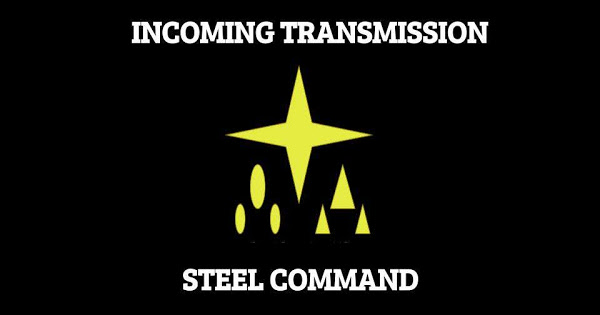 |
| The Assault Frigate would rather not move. If it had a pair of transports, it could go last instead! |
This concept is hardly unique to Armada, in fact it was coined to describe the phenomena in chess. Yet it is a key component of many of our strategies. Being able to force an opponent to move into a disadvantageous position, or keep our own ships from doing the same, is one of the key reasons that number of activations have become a major strategic consideration. In much the same way, first activation is also a consideration here, as any movements made by the opponent at the end of the round could be moves they would rather not make as well.
For Armada, we can look at Zugzwang in two different ways: Offensive and Defensive. For Defensive Zugzwang, we are being forced to move into an enemy trap - see the picture above - and do not have anyone available to force the enemy to spring the trap early. Recognizing traps before they are set, and setting up traps of your own are key skills for Armada. Take a look at this older, but still relevant article on Threat Range for more information.
For Offensive Zugzwang, we have the opposite scenario. We have set a trap for the enemy, but because we lack the activations to force them to spring the trap, we are forced to abandon it, sacrificing attacks that we would have had if the opponent was forced to move instead. When setting traps of your own, it is important not only to know where an opponent's fleet is headed, but where in the turn order it will arrive.
It is entirely possible for a situation to be both an Offensive and a Defensive Zugzwang at the same time, being forced to spring your own trap, only to fall into an enemy's.
Activations Aren't Quite The Whole Story
While activation advantage does help you set up a Zugzwang for your enemy, it is actually not the only way to do so. The thing to remember is turn order. While an enemy is able to delay their activations to the end of a turn, all of their ships and squadrons will activate by the end of the turn, meaning that if you can use your fleet's movements to end their activations setting a trap for the remaining enemy ships (and possibly threaten the ones that are already activated) you will still force your opponent into a Defensive Zugzwang.
Consider a list of two MC80s and a Pelta (3 activations), verses a Demolisher and delaying ships (Raiders / Gozanti) (5 activations). The MC80s and Pelta should end their activations setting up a trap, so that if Demolisher attempts to jump in and the end of the round, one of the two MC80s will be able to hammer it at the start of the next turn.
Easier Said Than Done
Yes, this is something that is much, much easier to identify than it is to prevent or cause. But being able to set up traps for the opponent, or to sniff out your opponent trying to force your movement a turn early is an important skill for Armada. This is a skill you want to have on Turn 2, so that your Turn 3 and Turn 4 go exactly according to plan. Hopefully by now you can identify a situation where you or your opponent has been put into Zugzwang. You can identify what kind of Zugzwang it is. And now you can begin the more difficult process of figuring out how it happened, and how to prevent it / replicate it in the future.

Thanks for putting a name to this. I find myself spotting problems in upcoming turns as I try to anticipate who will activate what, in what order. An element of psychology comes into play, as I try to bluff what will be a high priority. I find the fateful choice is often between offense and defense, greedy play versus conservative play. Do I try to use the first-activation initiative to eliminate my opponent's vulnerable ship, or to scoot my own vulnerable ship out of harm's way? What will my opponent do in a similar situation? And how do I act on *this* round in order not to give away my plan?
ReplyDelete